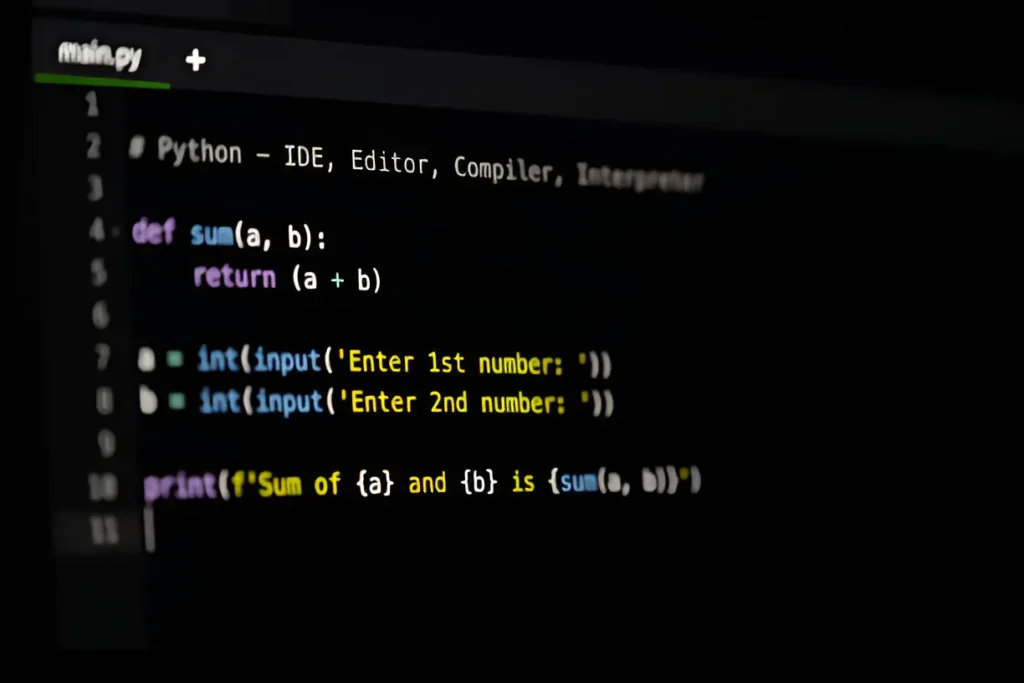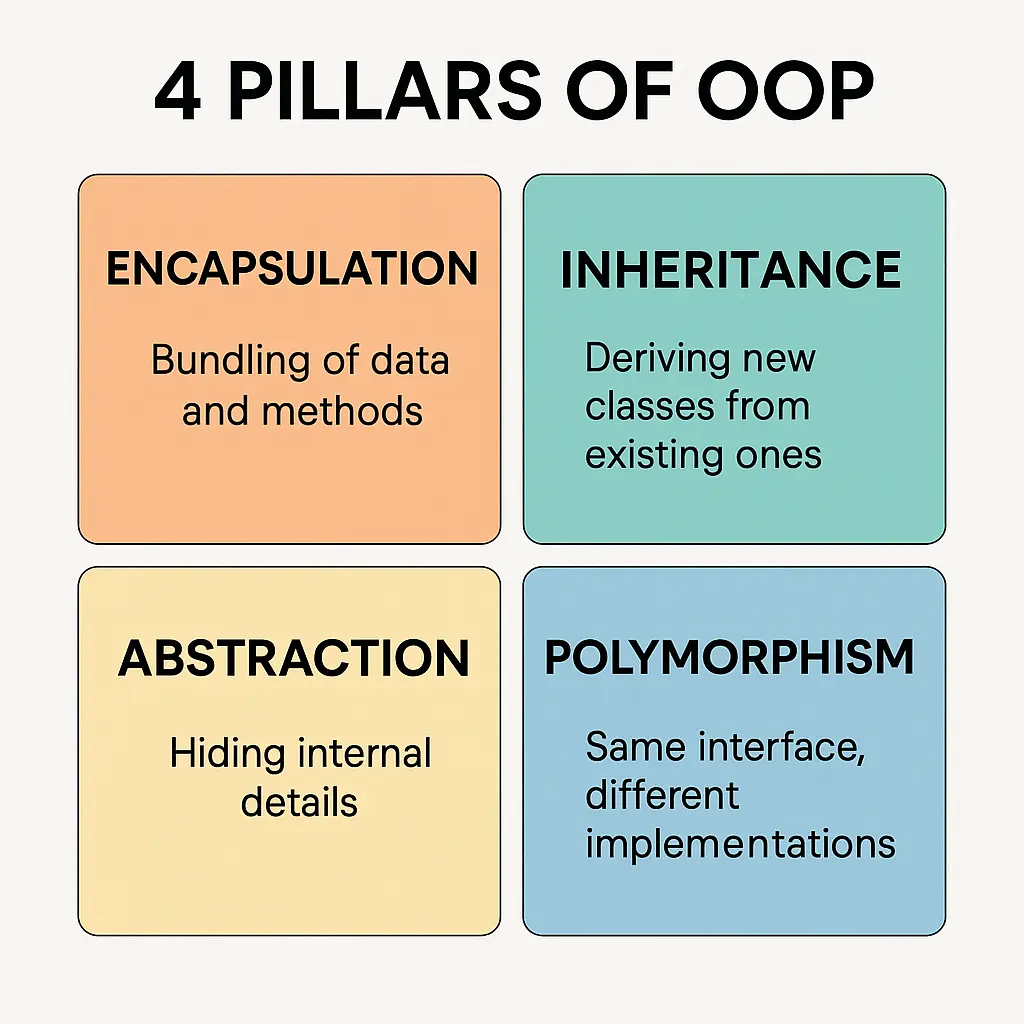There are two types of people living in this world, one who loves python and the others who don’t know how to code. But the question mostly users ask is python object oriented.

The answer is yes. It is an object oriented language. In the early days of coding, people used to code in a procedural way, that changed into function and finally it changed into object oriented programming known as OOP.
Procedural, Functional and OOP:
Is Python Object Oriented? In the early years of coding the coders wrote code line by line. This was called procedural coding.
After the functional coding release, coders start to write it. If anyone knows about the programming, they know that it can be used again and again after making it for one time. It reduces the length of the code.
OOP changed the game in the coding world. When functions came into the picture, coders could start to recycle groups of code. But occasionally the code became cluttered when there was a lot of data and numerous related methods.
That’s when the Object-Oriented Programming (OOP) was introduced a “smarter” way of organizing your code.
In OOP, you have objects mini programs that have data (like name, color, speed) and actions (like run, stop, jump) all wrapped up together.
It’s like turning a humble function into a real-world thing that knows how to act and what it contains.
Class in OOP:
Is Python Object Oriented:
A class is like a blueprint for making the objects in oop.
If you want to make a cake, the recipe (class) tells you what ingredients (data) and steps (functions) to use, but these are just ingredients. For making cake you need a class with an object.
We can make many cakes with the same ingredients present in the class and different ingredients in the object.
class Cake:
def __init__(self, flavor, layers):
self.flavor = flavor
self.layers = layers
def describe(self):
print(f”A {self.layers}-layer {self.flavor} cake!”)
Object is OOP:

As mentioned above, the object is a collection of data (attributes) and behaviour (method) defined by its class.
Suppose the class is a recipe of the pizza and the object is actually a pizza using the ingredients present in the class.You can make many pizza (objects) by using the ingredient (attributes) present in the class.
# Define the Pizza class (the recipe)
class Pizza:
def __init__(self, size, toppings):
self.size = size # Attribute (data)
self.toppings = toppings # Attribute (data)
def bake(self): # Method (behavior)
print(f”Baking a {self.size} pizza with {‘, ‘.join(self.toppings)} toppings.”)
# Create pizza objects (actual pizzas)
pizza1 = Pizza(“Medium”, [“Cheese”, “Mushrooms”])
pizza2 = Pizza(“Large”, [“Pepperoni”, “Olives”, “Onions”])
# Call the behavior (method)
pizza1.bake() # Output: Baking a Medium pizza with Cheese, Mushrooms toppings.
pizza2.bake() # Output: Baking a Large pizza with Pepperoni, Olives, Onions toppings.
Constructor:
The constructor used in the class to initiate the object
Sometimes when coder don’t use constructor in the class, python make it automatically behind the screen to initiate the object.
Constructor will comes with every object
class Student:
# Constructor
def __init__(self, name, grade):
self.name = name # attribute 1
self.grade = grade # attribute 2
# Method to display student info
def show_info(self):
print(f”{self.name} is in grade {self.grade}.”)
Types of Constructors:
Two types of constructors are present in the oop python
Default Constructor:
As mentioned above, if the coder don’t use constructor in the class , it automatically make behind the scene
Parameterized Constructor:
If the coder mentions the constructor, with this syntax def _ init _ (self), it is known as a parameterized constructor.
If the parameterized constructor is present in the class , the object uses its data rather than the default one.
Attributes (Data):
It is also divided into the two types:
Class Attributes:
The same attributes that are used in the class for every object are known as class attributes.
Instance Attributes:
The different attributes used in the object are called the instance attribute.
I know it is difficult to understand the concept. Let me tell you an example of this.
In the class , the name of the students are different, that is the instance attribute, but the school will remain the same for every student or even though the class will be the same for every student in the class, that is class attribute.
Methods:
Classes are the collection of the attributes and the methods.
Methods are simply the function that runs the object.
Def hello(self)
print(“Welcome Student”)
It writes after the constructor and before the object.
Decorators:
In Python, we use a concept called Decorators to let us modify the behavior of an existing function, without modifying its actual code.
It’s in a sense a wrapper around a function, in the same way you might decorate a cake by piling on toppings (without changing the cake).
For example, when you want to reuse some additional behavior (e.g. checking login status, or measuring a function time) in loose coupling across several functions without duplicating the code.
Decorators are written with the @ symbol over the function name and are frequently seen in frameworks (such as Flask or Django).
Static Method:
On the other hand a “static method” is a kind of method that you can define inside a class that also does not depend on any particular object or isn’t necessarily a method of a particular instance of the class.
Put simply, when you define a function inside a class, it takes a self parameter so that it can operate on data from the object.
But a static method doesn’t care about instance or class-level data, it’s just a function that is hosted by a class to make it easy to find and invoke.
You use a static method by decorating the method with the @staticmethod decorator. It is helpful when a function logically belongs to a class, but the function are not related (i.e. doesn’t need to interact with the class itself or with instances of the class) like it does a general calculation or is utility function.
The 4 Pillars of OOP (Is Python Object Oriented Programming)
Object-Oriented Programming (OOP) makes things easier to handle by helping us to think about building real-world objects. The There are 4 pillars (main core principles) of OOP are- We’re going to break them down in plain language:
Encapsulation
Is Python Object Oriented
“Preserving everything and keeping it safe.”
Encapsulation is nothing but enclosing the data (variables) and the code (functions) that works on the data into a single class. It also involves covering up unnecessary details from the outside world.
It’s kind of like how all the wires and electronic circuits in your phone are hidden you just press buttons and it’s good. Similarly, in OOP, we put the complex logic inside the class and just show what is required.
Simply put: Show only what the user needs to see, and keep the rest hidden to protect the data.
Example:
class BankAccount:
def __init__(self, owner, balance):
self.owner = owner
self.__balance = balance # private variable
def deposit(self, amount):
self.__balance += amount
def get_balance(self):
return self.__balance
account = BankAccount(“Aisha”, 1000)
account.deposit(500)
print(account.get_balance()) # Output: 1500
print(account.__balance) # ❌ Error: AttributeError
Abstraction
Is Python Object Oriented
“Show what matters, hide the rest.”
Abstraction is about concentrating on what something does, rather than how it does it.
For example, a car when you’re driving a car, you only need to know what you need to use the car to drive it, the steering, the brakes, the accelerator not how you put it together. We do the same in programming: hide the process, and just show simple functions.
In other words: Don’t overwhelm the user with too much information. Keep things simple and clean.
Example:
from abc import ABC, abstractmethod
class Vehicle(ABC):
@abstractmethod
def start_engine(self):
pass
class Car(Vehicle):
def start_engine(self):
print(“Car engine started 🚗”)
vehicle = Car()
vehicle.start_engine() # Output: Car engine started 🚗
Inheritance:
Is Python Object Oriented
“Reuse and extend.”
By inheritance, a class (child class) has the option to use common behavior of another class (parent class). It also saves time and repeating code.
For instance, consider a parent class “Animal” that has fundamental traits such as walking, eating. A child class like “Dog” can access all of those features and also include new ones, such as being able to bark.
In short: Inheritance allows us to add to previous code, rather than create an entirely new code base with each new project.
Example:
class Animal:
def eat(self):
print(“This animal eats food.”)
class Dog(Animal):
def bark(self):
print(“The dog barks 🐶”)
d = Dog()
d.eat() # Inherited from Animal
d.bark() # Defined in Dog
Polymorphism:
Is Python Object Oriented
“One thing, many forms.”
The concept is that the same action can do different things depending on which object is doing it: this is ‘polymorphism’.
For instance, the word “speak” can be defined in several ways: A dog barks, a person talks, a bird chirps — but all are speaking to some degree.
In programming, polymorphism enables us to perform a task in multiple forms, and in Python it means that we can use the same function name, but the result will depend on object.
In other words: Same name, different behavior based on context.
Example:
class Cat:
def speak(self):
print(“Meow 🐱”)
class Dog:
def speak(self):
print(“Bark 🐶”)
def make_sound(animal):
animal.speak()
c = Cat()
d = Dog()
make_sound(c) # Output: Meow 🐱
make_sound(d) # Output: Bark 🐶

Conclusion: (Is Python Object Oriented)
So, is python object oriented. Well now we know that Python is an OOP (Object Oriented Programming) language.
It is based on all the core OOPs concepts such as encapsulation, abstraction, inheritance and polymorphism. Everything in Python is an object, numbers, strings, functions, and even classes themselves.
This is what makes Python so powerful and so flexible for creating real-life applications.
Python, despite the fact that you can program procedurally and use it as a functional programming language, it is very strong with OOP features and it is also a very good language to write clean, reusable and very well organized code.
Is Python Object Oriented? FAQs
Want to know how to write python code beautifully? Read
FAQs:
Q1. Is Python object oriented?
In Python, yes, everything is an object even plain old data types such as integers and strings. So, the argument is that you can claim that Python is exactly an Object-Orient.
Q2. Can I fall back to other programming styles in Python?
Python is flexible. You can organize your code in an OOP, functional or procedural way or combine them.
Q3. Why I should write OOP in Python?
OOP means more organised, reusable and manageable code. It’s particularly useful on large projects where you want to avoid things becoming too untidy.
Q4. Do you need a class and object in every Python project?
No. You could get away with simple functions and vars, for small scripts. But for larger projects, classes and objects will make your code cleaner and more maintainable.
Q5. What are some examples of OOP in Python in real life?
Programmers use OOP to make websites (e.g., with Django or Flask), games, mobile apps, and desktop applications. For instance, you could have a User class for a website or a Player class for your game.








